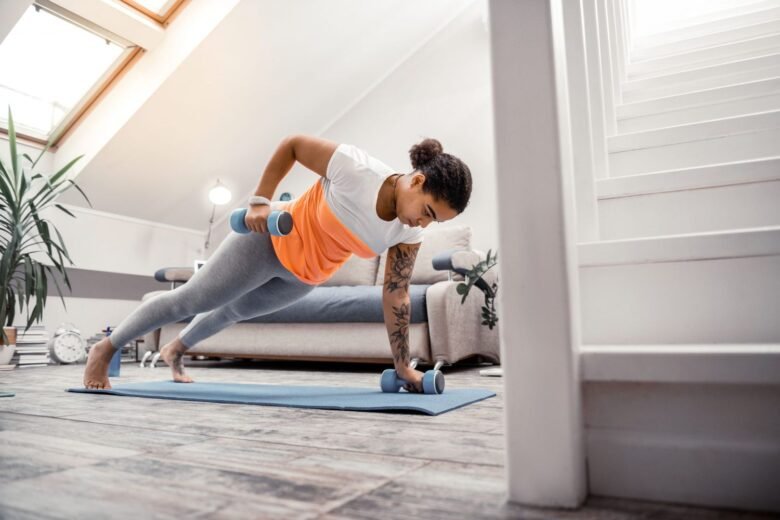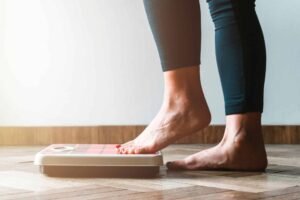Introduction to Bodyweight Workouts
Bodyweight workouts have gained considerable popularity due to their accessibility and effectiveness in promoting physical fitness. These exercises utilize one’s own body weight as resistance, allowing individuals to engage in an effective workout routine without the need for any gym equipment. This makes bodyweight workouts an appealing choice for anyone, regardless of their fitness background or level.
One of the key advantages of bodyweight workouts is their adaptability. They can be easily modified to suit various fitness levels, making them inclusive for beginners, intermediates, and advanced fitness enthusiasts alike. For instance, a simple push-up can be adapted for beginners by utilizing knee support, or intensified for more advanced individuals by elevating the feet. This versatility not only fosters individual growth but also ensures that workouts remain challenging and engaging.
Additionally, bodyweight exercises effectively enhance strength and flexibility. By performing movements such as squats, lunges, and planks, practitioners can improve core stability and muscle tone, while also enhancing their overall flexibility. Regular engagement in these workouts contributes to better posture, increased range of motion, and a more resilient body capable of performing daily tasks with ease.
Moreover, bodyweight workouts provide a convenient solution for those who may not have the time or resources to attend a gym. They can be performed in various settings, including at home, outdoors, or while traveling, which makes maintaining a physically active lifestyle easier. By eliminating the barriers associated with gym memberships and equipment, individuals are more likely to incorporate fitness into their daily routines, ultimately promoting long-term health and well-being.
Sample Full-Body Bodyweight Workouts
Bodyweight workouts are a versatile and effective means to achieve full-body fitness without the need for any equipment. Below, we present a series of sample workouts that target major muscle groups, accommodating various fitness levels from beginners to advanced individuals. Each workout consists of fundamental exercises, and guidance on sets and repetitions is provided for optimal results.
Beginner Workout: This workout focuses on foundational movements to build strength and endurance. Aim for 2-3 rounds of the following exercises:
- Push-ups: 5-10 reps. Maintain a straight line from head to heels, lowering your body until your chest nearly touches the ground.
- Bodyweight Squats: 10-15 reps. Keep feet shoulder-width apart, and lower your hips back while keeping your chest up.
- Lunges: 5-10 reps per leg. Step forward with one leg and lower your body until both knees form 90-degree angles.
- Plank: 20-30 seconds. Keep your body straight while resting on your forearms and toes.
Intermediate Workout: This workout incorporates more dynamic movements for those with some experience. Perform 3-4 rounds:
- Decline Push-ups: 8-12 reps. Elevate your feet on a stable surface to increase difficulty.
- Pistol Squats (Assisted): 5-8 reps per leg. Use a chair or wall for support if needed.
- Jumping Lunges: 10-12 reps per leg. Alternate lunges with a jump to increase intensity.
- Plank to Side Plank: 30 seconds. Transition from a standard plank position to a side plank.
Advanced Workout: This challenging routine targets all muscle groups and includes high-intensity elements. Complete 4-5 rounds:
- Archer Push-ups: 5-10 reps. Shift your weight to one side while performing each push-up.
- Jump Squats: 10-15 reps. Explode upward from a squat position.
- Split Squat Jumps: 8-10 reps per leg. Alternate between leg positions explosively.
- Plank Jacks: 30 seconds. Jump your feet out and in while in a plank position.
Regardless of the workout level, ensure proper form and pacing to maximize your workout’s effectiveness. Remember to listen to your body, and adjust repetitions as needed to maintain quality throughout your sessions.
Incorporating Flexibility and Mobility Into Your Routine
In a well-rounded fitness program, the significance of flexibility and mobility cannot be overstated. These components enhance overall performance, prevent injuries, and promote efficient movement patterns during strength-building workouts. Incorporating dynamic stretching and mobility exercises into your routine not only prepares your body for the physical exertion ahead but also aids in recovery afterward.
Dynamic stretching, characterized by controlled movements that gently take your body through its range of motion, can be particularly beneficial when performed before workouts. Exercises such as leg swings, arm circles, and torso twists effectively loosen up the muscles and joints, preparing them for more vigorous activity. These movements increase blood flow, raise body temperature, and enhance the flexibility of the targeted muscle groups, setting the stage for an effective workout session.
Post-workout, incorporating static stretching techniques allows the body to gradually release muscle tension. By holding stretches for at least 20-30 seconds, you can improve your overall flexibility and promote muscle recovery. Essential stretches include hamstring stretches, quadriceps stretches, and shoulder stretches. Utilizing yoga poses such as Downward Dog or Pigeon Pose can significantly benefit your flexibility as well, while providing a calming effect after intense bodyweight workouts.
In addition to these practices, mobility exercises targeting key joints like the hips, shoulders, and ankles are crucial. Movements such as hip openers, shoulder dislocates, and ankle circles ensure these joints maintain a healthy range of motion, subsequently contributing to better performance during workouts. By prioritizing flexibility and mobility within your routine, you can foster enhanced physical capabilities, prevent injuries, and contribute positively to your overall workout outcomes.
Creating a Sustainable Home Workout Plan
Establishing a sustainable home workout plan is vital for long-term fitness success. To begin, it is important to set realistic fitness goals that align with your lifestyle and capabilities. Goals should be specific, measurable, achievable, relevant, and time-bound (SMART). For example, rather than simply aiming to “get fit,” set a goal to perform a specific number of workouts each week, or to complete a certain number of repetitions of an exercise by the end of a month.
Incorporating workouts into a busy day can be a challenge. To overcome this, scheduling workout times is crucial. Consider your daily routine and identify pockets of time, whether early in the morning, during lunch breaks, or in the evening. Consistency is key, and finding a regular time slot for your workouts can help establish a habit. It can also be helpful to start with shorter, more manageable sessions and gradually increase the duration and intensity as you become more comfortable with your routine.
Maintaining motivation throughout your fitness journey can also be challenging. Mixing up workouts can help avoid both plateauing and boredom. Incorporating various forms of training, such as bodyweight exercises, yoga, or high-intensity interval training, can provide diversity and keep your interest piqued. Additionally, tracking progress is important for personal accountability. Utilizing workout journals or fitness apps can enable you to monitor achievements, identify areas for improvement, and stay focused on your goals.
By customizing a home workout plan that fits personal circumstances and preferences, individuals can fully engage in their fitness journey. Emphasizing realistic goal-setting, effective scheduling, and diverse routines will empower readers to cultivate a lasting exercise practice. Engaging in self-monitoring techniques will not only enhance accountability but also allow you to witness your own progress, fostering a stronger commitment to your health and well-being.




